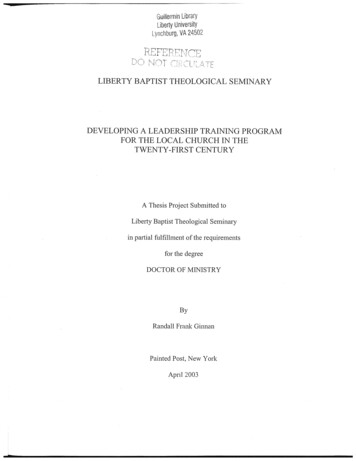
Transcription
Real life experiences with theSharePoint WorkflowPaolo PialorsiSenior ConsultantPiaSys.com@paolopia#SPSUKThis session mainly targetsDevelopers and Workflow Designersthat use SPD2013 and VS2013
Thank You to Our Sponsors!
About Me Project Manager, Consultant, Trainer More than 40 Microsoft certification examspassed, including MC(S)M Focused on SharePoint since 2002 Author of 10 books about XML, SOAP, .NET,LINQ, and SharePoint Speaker at main IT conferences worldwide http://www.piasys.com/
Agenda Workflow Architecture (recall) Good to Know and Limitations Common Business Requirements Workflow Security Notes from the Fields
Workflow ArchitectureSharePoint 2013/SharePoint Online
Workflow ArchitectureAccess ControlSharePoint 2013ContentPeopleSharing2010 WFOAuthAPI (REST OM)WorkflowManagerWorkflow Services ManagerInstancesDeploymentInteropMessagingWF Service Application ProxyWorkflow ClientSharePoint DesignerVisual StudioEventsService Bus
Good to Know and LimitationsWith SharePoint Designer 2013 and Visual Studio 2013
Known Facts The Workflow Manager uses the REST API to communicate withSharePoint 2013/Online The REST-based requests should leverage JSON serialization Security over HTTP(S) is based on OAuth/ACS The Workflow Manager is extensible Using custom declarative Actions/Activities Using custom code-based Activities In order to support Office 365 and SharePoint Online You can’t create code-based activities Only declarative (markup-based) extensions are supported
SPD2013 Native Actions/Conditions Are not enough for real business scenarios
VS2013 Native Actions/Activities Are still not enough, and somehow less than those of SPD2013
You can add custom activities to VS2013 In order to enrich the toolbox with some SPD2013 actions Right click the Toolbox and click “Choose Items ” Browse to: C:\Program Files\Common Files\microsoft shared\Web Server Extensions\15\TEMPLATE\WorkflowActivities Choose: ll Select the actions you’re interested in
But something is still missing Move File Upload File Configure Permissions on Items Manage Workflow Tasks Search for Items Publish/Approve Document Save data on a back-end database Etc.
Luckily we have the REST API Support XML/OData/JSON format Can be used to query (OData)contentsServerClient Can be used to manage (add,update, delete) content Make the Client Side Object Model(CSOM) remotely available viaREST Useful for JavaScript/jQueryconsumers But also for workflows in SPD2013or Visual Studio 201xapi is new alias for vti lverlightLibraryCustom Client Code.Net CLRLibrary
api ReferenceWeb Application HostnameAPI Namespacehttp(s)://{Host Name}/{site}/ {method({parameter},{parameter}, )}Site Collection (Optional)Operation
Sample URLs api/web/lists -4B89A040F14A') api/web/lists/getByTitle('Documents') api/web/lists/getByTitle('Documents')/Items api/web/lists/getByTitle('Documents')/Items(4) api/web/CurrentUser api/web/SiteUsers api/web/RoleAssignments
DemoHow to use the REST API
Common Business RequirementsAnd how to face them
Moving Documents Often document approval workflows need to move files aroundlibraries To support different authorization rules To fire cascading approval workflows/processes There isn’t an out of the box activity to move documents You simply have an SPD action to copy them Using REST API you can leverage the MoveTo method of File type
DemoA custom activity to Move a document more about security later
Custom Workflow Forms and Tasks When you create real business workflows You typically need to feed workflow instances with arguments And you need to provide “usable” tasks to target users However, the out of the box UI of SharePoint is really “rude” and“minimalist” You should create Custom Workflow Forms and Tasks
Understanding Workflow Forms Every workflow definition can have Association Form: to associate a workflow definition to a target (0 or 1) Initiation Form: to start a workflow instance on a target (0 or 1) Task Forms: to provide custom UI for tasks (0 or more) Are common ASPX pages But without .NET code, with client-side JSOM code only You will need to interact with the Workflow Services Manager client library Visual Studio 2013 provides item templates for Association and Initiation forms You need to manually define Tasks Forms Leveraging custom Workflow Task content types and custom task lists
Workflow Services nServiceMessagingServiceInteropService
DemoCreating custom Workflow Forms and Tasks with custom UI
Handling External Events Real business workflows need to interact with External users External software solutions (ERP, mobile apps, etc.) Etc. You cannot rely only on tasks and users’ interaction! The Workflow Manager engine supports asynchronous custom events The workflow instance can be suspended while waiting for events No CPU or RAM consumption Workflow instance persistence and bookmarking
DemoHandling External Events
Handling Exceptions The out of the box engine provides TryCatch (Try Catches Finally) Throw Rethrow Kind of Exceptions Internal External
Internal Exceptions Occur in your own business logic You should manage them properly Provinding some sort of logging Mind the History List limits (more on this later ) Where it is possible define a way out Or a retry policy Native activities (like HttpSend) have out of the box retry policies
External Exceptions Those that don’t directly depend on you Security Exceptions Infrastructure issues Etc. You should log them And rethrow them Never try to solve or hide issues that don’t depend on you!
Other Common Needs Setting item-level permissions Approval tasks with predecessors Setting Workflow User Status and Workflow Status Field
DemoHandling Exceptions and some other custom activities
Workflow Security
A Workflow is like an App The workflow engine has an App Principal You can manage app principals: https://{hostname}/sites/{site}/ layouts/15/appprincipals.aspx?Scope Web https://{hostname}/sites/{site}/ layouts/15/appinv.aspx https://{hostname}/sites/{site}/ layouts/15/appregnew.aspx
Default permission model Typically a workflow app has write permission level And while working leverages both User permissions Workflow App permissionsUser PermissionsApp PermissionsWorkflowPermissions
DemoConfiguring Workflow App Security
App Step and AppOnlySequence (recap) You can configure a web site to «Allow workflows to use apppermissions» Assign «Full Control» to the workflow App Principal (appinv.aspx) AppPermissionRequests AppPermissionRequest Scope "http://sharepoint/content/sitecollection/web" Right "FullControl" / /AppPermissionRequests And Trust it!
Notes from the Fields
Good Gotchas Remind that app web are deleted when apps are removed Don’t store fundamental data in the app site Rely on external repositories (DB, host web, etc.) Carefully consider target lists size Mind the list view threshold Mind the number of tasks and history items Use dedicated task lists and history lists for each workflow association Avoid sharing the same lists for all workflow associations Avoid leveraging on Workflow History In particular in Office 365/SharePoint Online Be really careful with item-level permissions You could end up loosing control
Thanks!Feedback: paolo@pialorsi.com – www.piasys.com - @PaoloPiaDemos shortly available on: http://github.com/OfficeDev/PnP/
Understanding Workflow Forms Every workflow definition can have Association Form: to associate a workflow definition to a target (0 or 1) Initiation Form: to start a workflow instance on a target (0 or 1) Task Forms: to provide custom UI for tasks (0 or more) Are common ASPX pages But without .NET code, with client-side JSOM .











